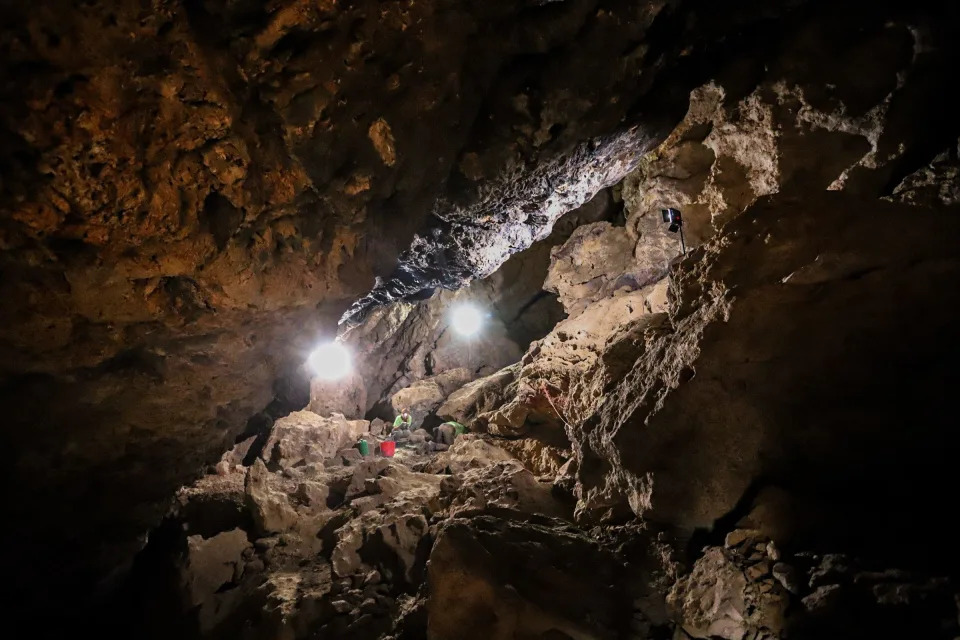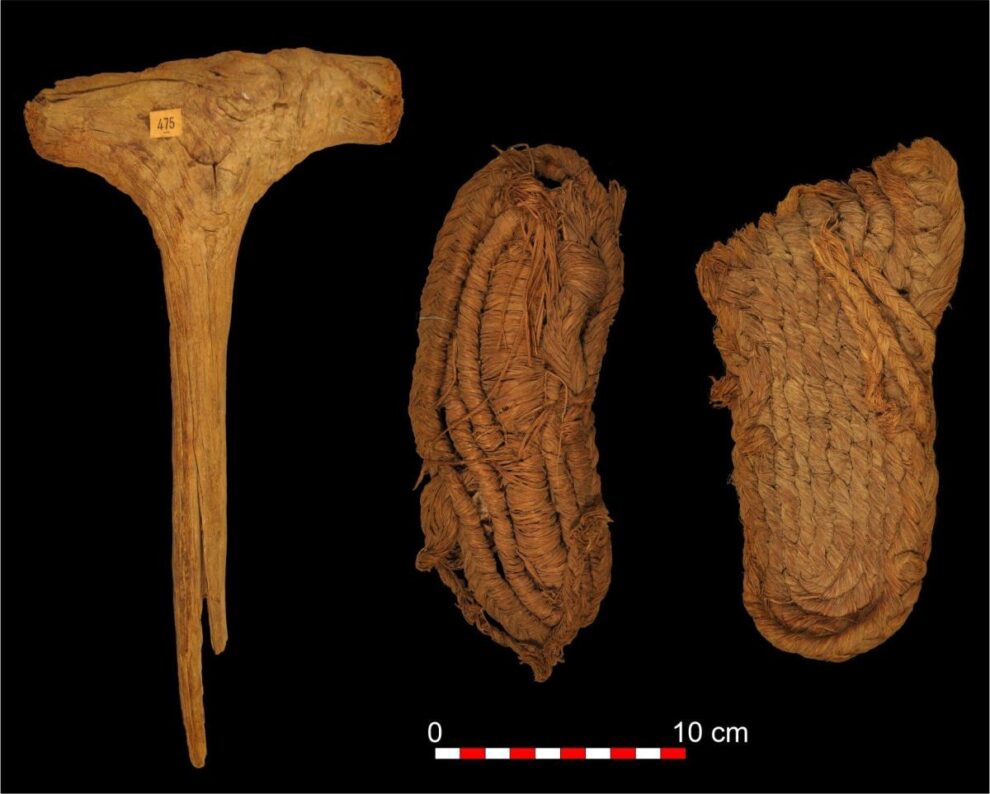Scientists say grass sandals discovered in a cave in Spain are 6,200 years old, making them the oldest woven grass footwear ever discovered in Europe and forcing them to rethink “simplistic assumptions” about our human ancestors in the region.
The announcement came from a team that has been studying 76 objects found many years ago in a cave in southern Spain. Researchers from the Universidad de Alcalá and the Universitat Autònoma de Barcelona said the objects were the first direct evidence of basketry among hunter-gatherer societies and early agrarian communities in southern Europe.
Among the discoveries were baskets, sandals and organic tools made of reed and esparto grass. By studying the raw materials the objects were made of, the researchers were able to date them to the early and middle Holocene period, between 9,500 and 6,200 years ago.
“The quality and technological complexity of the basketry makes us question the simplistic assumptions we have about human communities prior to the arrival of agriculture in southern Europe,” said Francisco Martínez Sevilla, a researcher in the Prehistory Department of the University of Alcalá.
María Herrero Otal, who co-authored the study, told CBS News the research offered “a unique opportunity to study social aspects of early human groups,” because the type of fiber-based materials discovered are not typically recovered from archeological sites.
“It means that the use of esparto grass has started al least 9,500 years ago, and it is a tradition which is still live in Iberia [Spain and Portugal],” Otal told CBS. “It is spectacular how the techniques, the raw material and its preparation has been used for thousands of years and there are still people working in the same way.”
The sandals discovered in the cave represent “the earliest and widest-ranging assemblage of prehistoric footwear, both in the Iberian Peninsula and in Europe, unparalleled at other latitudes,” according to the study, which was published in the journal Science Advances.

The items were first discovered during mining activities in the Cueva de los Murciélagos, which translates literally as “cave of the bats,” of Albuñol in Granada, Spain, during the 19th century. But the authors of this study concluded that the materials discovered were about 2,000 years older than previously thought.
According to researchers, the low level of humidity combined with the cool, dry winds inside the cave helped prevent bacteria from developing, which allowed the fiber-based objects to survive through the millennia.
The researchers said two types of footwear were discovered at the site, one with a consistent woven sole, and another with a harder “central core.” While no laces were found with the first type, “for the central core type, a small group of fibers emanating from the base of the sole may have been placed between the first and second toes. These fibers are also connected to a braid fixed to the middle of the sandal, which could be tied around the ankle.”
Source: Yahoo News








































